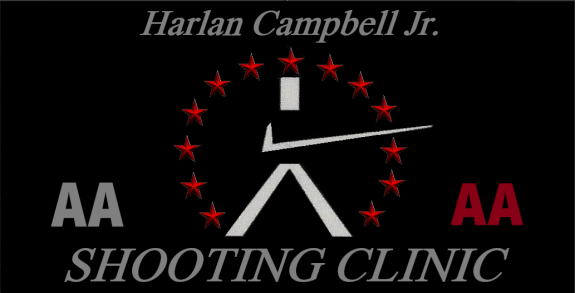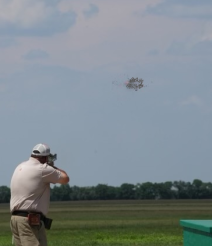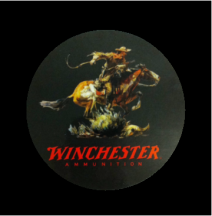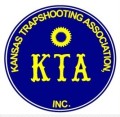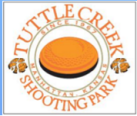"Howdy"...from Western Kansas,
From time to time I receive questions concerning shooting problems, gun fit, issues faced on the line...during practice, competitive events, and shoot offs. Preparation, thought process and in general just plain shooting knowledge...
folks asking the why's and reasons behind them.
Welcome! To my "QUESTIONS & ANSWERS" page.
As time allows, I will pick a question or two, from those submitted, and work to give you an honest, forthright, and thoughtful answer, and in some cases, my "professional" opinion.
Hopefully, this becomes an enjoyable, and educational endeavor with learning and understanding for all. In addition, to my social-media skills becoming better in the process.
I look forward to answering your questions.
Please send your questions to: Ready_On_1@yahoo.com
I wish you all well...take care and stay safe.
Until next time...Ready On 1
Respectfully,
"READY ON 1"
1) "What is better about a "HI-VIZ" sight?"
Answer:
At gun clubs and trap shoots there are always discussions at "The table of knowledge"...about the beads on a shotgun...are they needed...or not...should I "black them out"...or just take
them off completely.
There are many schools of thought in these conversations... some have merit, some are just opinion.
In the end there is still no understanding, only "Style" and club-house philosopy.
We make assumptions to the idea...
"You don't need the beads on a shotgun."
"If it fits" or if the gun "shoots where you're looking...
Who needs them, just look at the target and shoot!!"
There are many different types of shotgun shooting, and every one of them deal with the same concept... a hard, clear focus on the target at hand is needed, NOT on the beads at the end of the barrel...BUT... let's not "get the cart before the horse" here.
Let's start with "Gun Fit" and why the beads are an important part of that "Fit".
We have always understood that "Gun Fit" is about feel, comfort, elimination of recoil, consistency, visual acuity, point of impact, and general betterment of shooting.
So...why are the beads important?
Because they are the "Checks & Balances" that keep a good gun fit, functional!
First...they draw your attention to the "gun mount", to make sure you're not getting sloppy in your mechanics, and that your head position and eye alignment are correctly placed down the bore center to help you and your pattern stay in the same place...consistently.
I check my bead alignment every time I mount the gun. Now we know why there are beads on a shotgun!!
How does a "HI-VIZ sight help?
It helps in the "above gun" fit stage, but any gun barrel with two beads will accomplish this as well. Where it really makes a difference, is after the mount and your eyes are fixed in an area over the gun, and in a soft focus in the area of the target being acquired.
Once the target is acquired and a hard focus is applied, the light pipe of the HI-VIZ sight, is seen peripherally...this allows your eyes to stay "focused on the target" and periphally see a "bore line" and not the bead..."Very Important Information" given here...to shoot the target correctly based on angle and speed of presentation.
There are many different colors and light pipe sizes to choose from, based upon need of brightness, lighting conditions, such as cloud color...target color...background color, to help shooters "customize" the "HI-VIZ" sight to their individual needs.
Each and every one will help if the proper mechanics and fundamentals of gun mounting and visual practices of shooting are applied correctly.
Until next time...Ready On 1
Respectfully,
2) How to find hold points and focus areas.
ANSWER:
Finding a hold point and focus area can be frustrating at times, as we travel to different clubs, endure different backgrounds, different lighting conditions, different seasons
throughout the year, not to mention target color and presentation.
Then we have the differences of hold points and focus areas for 1-eyed shooters and 2-eyed shooters. I’m not going to try to impress upon you which is better or which is worse, I’m only going to discuss advantage/disadvantage, from there you can make your own informed decision as to which should be used.
As I start my class I ask my students questions, this is to get them to start thinking about change and how change affects their game.
Questions are simple...“How far is a 100 yard dash”...“ Is it the same in every lane?”...“How far is it to first base, and is it the same in every MLB park?"
You would be giggled to listen to some of the answers that have come from the students…
But within these questions lie the answers, Yes a 100 yard dash is the same in every lane, that is what makes the race equitable for all the competitors.
When we go to a gun club and trap houses are not the same height or width, how does a 1-eyed shooter adjust?
Think back to a time when you played catch with a older brother, and he could throw harder... which way did you find
yourself moving in the game of catch?
Most likely, it was further apart...this was to help you slow the ball down and not get smacked in the head…slower was better and more manageable.
We have commented on how slow and big the target looked when we shot well, and how small and fast it was when we shot badly. We need to take a lesson here, slower is better!
We can make the target slow down and look bigger if we follow some of the "Constants" that we know…
Constant 1. Target speed
Constant 2. Target height
Constant 3. Shooters visual eye height
Constant 4. Background and lighting conditions
Notice I did not say "trap house height."
Your visual height, that distance your eyes are from the concrete you are standing on will intersect with the target presentation, find a line in the back ground that you can use as a visual reference to parallel.
Your soft focus transitioning to hard focus starts from this line up...it is from here up that whole and clear targets are seen, where they slow down and look big!
As you try this your eyes will need to remain still and in a soft focus at the call, do not let them drop back down to the house as this will cause a streak or blur.
As the target gets to your visual parallel… transition to a hard focus on the target and keep your eyes locked on the target!
Adjusting to each target presentation is simple, always start from a visual parallel and adjust as needed up or down as conditions and presentations warrant.
Remember to write yourself some notes when you find the sweet spot at each gun club.
I have had lots of success in transitioning 1-eyed shooter to 2-eyed hold positions allowing them to enjoy the advantage rather than the disadvantage of chasing the target or line shooting give it a try.
Until next time...Ready On 1
Respectfully,
3) Is there a good way to work on your Mental
Game, and develop a strong Pre-Shot Routine?
Answer:
Developing a strong mental game plan, and a polished pre-shot routine are two very important learned disciplines of a competitive shooter.
It starts when the shooter has had some success in the game, and at a time when their mechanics and fundamentals are starting to become more consistent, The shooter begins to get the feeling that they can control the process, and they want to break that extra target!
At this point the shooter graduates from the hopes / wishes of the beginner to average shooter...to the detailed game plans / mental disciplines and strategies of a polished competitive shooter..
Set your goals. What is important to you, what do you want to achieve?
I recommend setting goals in groups of three, depending on the number of targets you are shooting, and the time you have to dedicate to the achievement of your goal. I warn you now...this is hard work!
Once your goals have been set, you are going to need to hold them in the highest regards you cannot be wishy-washy here. Create a Game Plan. Examine your game...its strength and weakness.
“Your Mission, Mr. Phelps...should you choose to accept it,”
Eliminate the weakness and polish the strengths. This will take time and thought in examination of your game.
Start a journal of your shooting and everything involved with your shooting from this point on. Sit down and think about your game.
Are you better in the morning rounds, or in the afternoon rounds? Are you better in bright conditions, or in cloudy conditions.
Do you start the round strong and finish weak, or just the opposite.
Do you like higher targets, or lower targets, do you have a target color preference?
What are your habits and routines? Do you have mental disconnects on the line due to nerves or distractions, do things bother you?
When you miss, ask yourself...'Why did I miss... Was it a visual miss, or a mechanical miss?'
Did you work on the target hard with the intention of breaking it...or...did you shoot because it was your turn?
Are you set up correctly to break every target? Does your gun fit?
These questions and observations,all must be answered, they are the building blocks of Professional
...Game Plans - Pre-Shot Routines and Solid Mental Disciplines...
that competitive shooters use to take advantage of the situations and their competition!
As you work to understand your shooting game on a higher level, I assume your gun fits, and you have a good set of mechanics and fundamentals working for you. If not...those need to be addressed First.
As you eliminate needless mistakes, your thought is to only give targets back, to the competition, based on your skill, not on your lack of attention to detail or discipline.
Start at the beginning...Stance, Setup, Hold points, Focus Area.
Read the conditions, look at, and read each target like you were shooting it.
Your gun mount is to be silky smooth, tolerate no mistakes here. If it's not right...start over!
Create a positive mental mantra, something like slow down, be patient.
Remember, read the target, let the shot develop, shoot smart, control the shot, and your thought process every time!
“Smart shooters win Championships”
Know yourself and your game. When you shoot well why did it happen?
You were in control, You were in the game mentally.
The same discipline applies when you have the bad day or the bad round.
Evaluate your performance, make small changes, and minor adjustments, write it down.
PRACTICE discipline of thought, and discipline of execution all the time, EVERY TIME!
This should get you started in the right direction to work on your Mental Game and develop a strong Pre-Shot Routine.
Until next time...Ready On 1
Respectfully,

